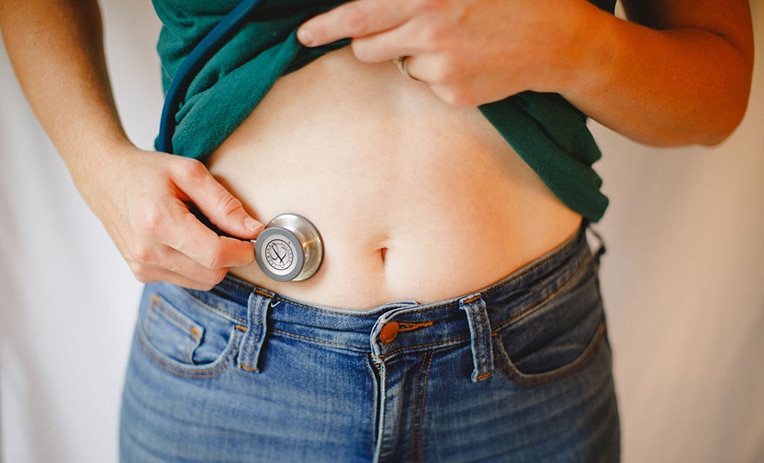
Sources of D2 include:
- Shitake mushrooms
- Fortified foods
- Dietary supplements
Sources of D3 include:
- Sunlight exposure
- Fatty fish- salmon, fish oil, tuna
- Eggs
- Butter
- Beef
- Liver
Vitamin D and Fertility
Vitamin D plays a key role in fertility, vitamin D receptors are found in the ovaries, uterus, placenta, and testis 1. Vitamin D and other hormones contribute to seasonal changes in fertility which impact pregnancy rates and outcomes. Increased pregnancy rates can be seen in the summer months while reduced ovulation rates can be seen in winter months2.
Anywhere from 20-90% of perimenopausal women are deficient in vitamin D which can create difficulties in women becoming pregnant. Sufficient levels of vitamin D can reduce the risk of pre-eclampsia, premature delivery, and pregnancy complications.

Vitamin D, AMH, & PCOS
Anti-müllerian hormone (AMH) is an important lab marker to indicate a woman’s ovarian reserve. Vitamin D can regulate AMH levels, whether AMH levels are low or high it is improved by adequate intake of vitamin D. Women deficient in vitamin D can improve AMH levels by increasing sunlight exposure and dietary intake of vitamin D3. In women with polycystic ovarian syndrome (PCOS), vitamin D deficiency can lead to abnormally elevated AMH levels. Proper supplementation and vitamin D intake can lower AMH to normal levels thereby preserving the ovarian reserve1.
Vitamin D in Men
Male infertility is also associated with vitamin D deficiency. Adequate vitamin D levels improve sperm quality by contributing to spermatogenesis and sperm maturation 2,4. It’s important to note that too little or too much vitamin D can lead to decreased sperm quality. Vitamin D is an important regulator in calcium levels in the body, by increasing calcium levels vitamin D also increases sperm motility5. Vitamin D protects DNA in sperm and reduces oxidative stress in the testis2.

Vitamin D Intake Levels
It’s clear that adequate vitamin D levels improve fertility for both men and women, but how much vitamin D is needed to be “adequate”? This is an area of debate among researchers, but intake levels will vary depending on climate, geography, and age group. The Institute of Medicine recommends 600 IU’s per day for adults. For individuals deficient in vitamin D, dosing 1,000-10,000 IU per day can help raise blood levels. Your skin can make up to 15,000 units of vitamin D from one pinking sun exposure. Generally, 15-minutes of direct midday sunlight exposure should maintain adequate blood levels of vitamin D. People with darker skin colors may need to increase exposure and it’s recommended to add a supplement in winter months.
Before adding any supplemental vitamin D it’s important to have blood levels checked so appropriate dosage can be given. Vitamin D toxicity can lead to tissue and vascular calcification, which can only happen from high dosing supplements6.
Vitamin D Laboratory Reference Ranges
Conventional Range (6) 12-50 ng/mL
Optimal Range. 40-65 ng/mL
If you’re interested in learning more about vitamin D, supplementation, or learning more about your level. You can email info@drbreannaguan.com to schedule an appointment with Dr. Guan.
- Sources
1. Irani, M., & Merhi, Z. (2014). Role of vitamin D in ovarian physiology and its implication in reproduction: A systematic review. Fertility and Sterility, 102(2), 460-468.e3. https://doi.org/10.1016/j.fertnstert.2014.04.046 - Anagnostis, P., Karras, S., & Goulis, D. G. (2013). Vitamin D in human reproduction: A narrative review. International Journal of Clinical Practice, 67(3), 225–235. https://doi.org/10.1111/ijcp.12031
- Dennis, N. A., Houghton, L. A., Pankhurst, M. W., Harper, M. J., & McLennan, I. S. (2017). Acute supplementation with high-dose vitamin D3 increases serum anti-müllerian hormone in young women. Nutrients, 9(7). https://doi.org/10.3390/nu9070719
- Dabrowski, F. A., Grzechocinska, B., & Wielgos, M. (2015). The role of vitamin D in reproductive health—a trojan horse or the golden fleece? Nutrients, 7(6), 4139–4153. https://doi.org/10.3390/nu7064139
- Jueraitetibaike, K., Ding, Z., Wang, D., Peng, L., Jing, J., Chen, L., … Yao, B. (2019). The effect of vitamin D on sperm motility and the underlying mechanism. Asian Journal of Andrology, 21(July), 400–407. https://doi.org/10.4103/aja.aja
- https://ods.od.nih.gov/factsheets/VitaminD-HealthProfessional/#h2




